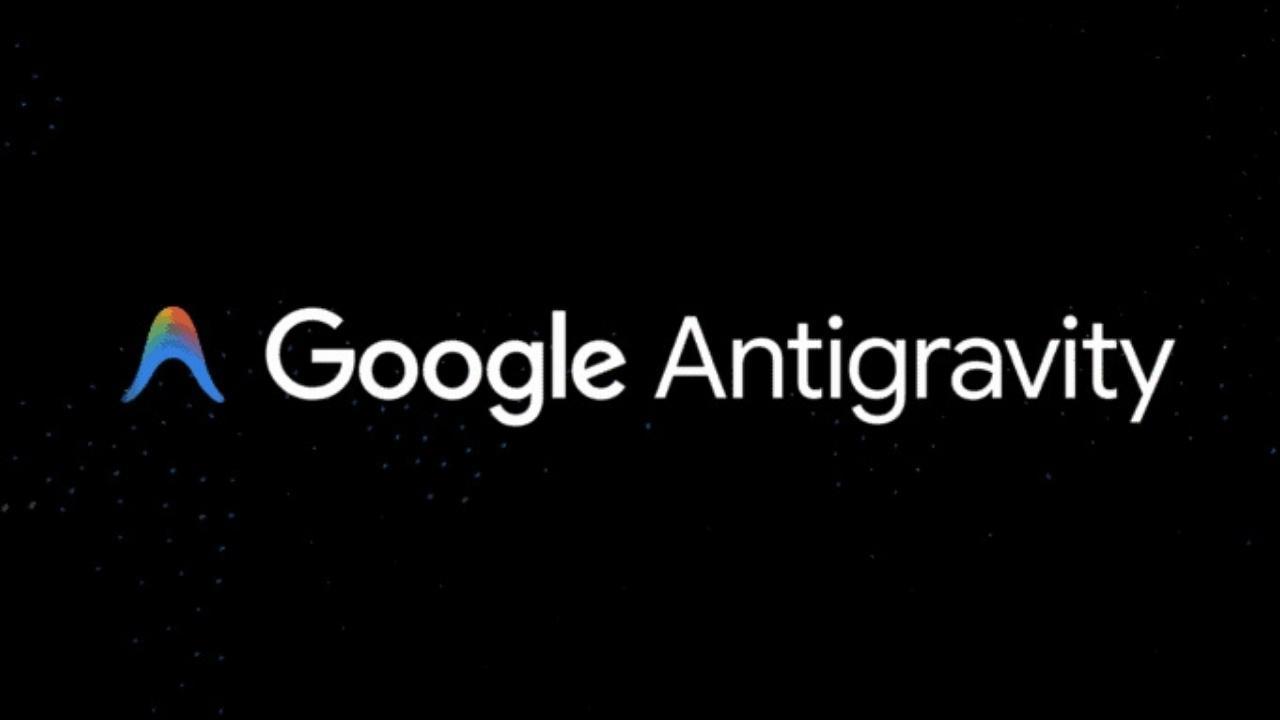
Join 10k+ people to get notified about new posts, news and tips.
Do not worry we don't spam!

Post by : Anis Farhan
The landscape of software development is shifting with the recent unveiling of Google Antigravity, a development environment centered on autonomous AI agents. This transition prompts vital questions for teams: “How will our workflows evolve? What competencies will be essential? Which tools might become redundant?” Underpinned by Gemini 3 and various AI models, Antigravity signifies a paradigm shift—altering not just coding practices but how development methodologies are visualized, executed, and scaled.
For engineering leaders, software architects, dev-ops experts, and product teams, the introduction of Antigravity unfolds strategic and tactical considerations that prompt a reevaluation of existing workflows, team dynamics, and tool choices. The platform brings prospects of enhanced productivity, smarter automation, and innovative methods of collaboration. However, transformative shifts accompany challenges—especially in governance, security, reliability, and workforce adaptation.
This piece delves into the essence of Google Antigravity, explores its distinguishing features, presents crucial preparations for software teams, outlines both opportunities and challenges, and suggests actionable steps to embrace this new frontier.
At its foundation, Antigravity is described as an “agent-first” development platform. Unlike traditional applications that view AI as mere tools or assistants, this approach positions AI as autonomous collaborators. These AI agents engage directly with code editors, terminals, browsers, and various tools, performing tasks independently under human supervision.
Key features include:
An editor interface reminiscent of conventional IDEs, enriched with a sidebar for AI agents that actively participates within the workspace.
A management view allowing for the creation, tracking, and coordination of multiple agents across workspaces, akin to a command center.
The creation of “Artifacts”—output generated by agents (like task lists and browser recordings) that clarify actions taken, assisting in verifications and audits.
Compatibility with a range of AI models—beyond Google’s Gemini 3 Pro to include third-party and open-source options (like Claude Sonnet 4.5, GPT-OSS)—providing teams with a versatile technological stack.
Public previews available across major operating systems (Windows, macOS, Linux) with ample usage allowances, encouraging developers to start experimenting now.
In summary, Antigravity is a transformative approach—not merely an enhanced coding tool but a comprehensive software development ecosystem intertwining teams, agents, automation, and artifacts.
Historically, productivity in software development has relied on tools such as IDEs and CI/CD pipelines. Antigravity introduces a novel element: agent-driven autonomy. Should agents proficiently write, test, and validate code segments, the human role may pivot toward overseeing orchestration and high-level design. Teams unprepared for this evolution risk falling behind.
With the integration of AI agents, software engineers may devote less attention to standard coding tasks and more to:
Crafting effective prompts and workflows for agents
Reviewing outputs and artifacts generated by agents
Setting regulations and quality standards
Incorporating agent outputs into broader architectural frameworks
Understanding model behaviors and their limitations
This new skill mix merges traditional engineering practices with AI orchestration.
Given that AI agents can perform tasks across code, terminals, and browsers, teams can enhance their development timelines. For instance:
Agents create UI prototypes, conduct browser tests, and compile workflows
Agents produce documentation, task lists, and reformulated user stories
Developers can review and adjust outputs rather than manually crafting every detail
This practice can significantly compress development timelines and improve market readiness.
Teams may shift towards “agent-led, human-verified” methodologies: agents generate initial code/features, while humans review and approve; agents then deploy and test. This fundamental shift alters collaborative approaches, requiring revamped coordination among dev-ops, QA, and product teams.
Should Antigravity gain traction, outdated legacy tools may soon fall out of favor. Teams will need to assess if their existing platforms can accommodate agentic workflows or if migration is necessary.
Boosted efficiency and productivity: With agents managing tedious tasks, engineers can concentrate on more impactful work.
Enhanced consistency and auditability: Artifacts created by agents facilitate clearer audit trails compared to traditional code reviews.
Reduction in manual errors: Automation through agents can minimize bugs in generated code and configurations.
Scalable support for developers: Particularly for extensive codebases, agents can assist with analysis, refactoring, or documentation of older modules.
Flexibility in hybrid models: The ability to integrate various AI models empowers teams to select based on finances, performance, or domain needs.
Even with cutting-edge models, inaccuracies or misleading outputs remain a potential threat. Defining rigorous validation processes is essential to ensure agent outputs are dependable, secure, and aligned with project architecture. Reliance on agents without oversight poses risks.
Agent manipulation of codes and operations elevates risks, such as inadvertently deploying vulnerable code or data leaks. Establishing governance practices and sandbox environments is crucial.
Teams accustomed to traditional IDE tools may find it challenging to transition to agent-led workflows. Comprehensive training and cultural adjustment are necessary preparations—not merely tool installation.
While public previews might be accessible at no cost, enterprise usage could become financially burdensome. Teams need a thorough understanding of compute consumption, rate constraints, and model choices.
Antigravity's success may hinge on extensions or integrations. Current plugins or ecosystems may not fully accommodate this platform, requiring substantial migration efforts.
Who retains rights over code generated by agents? How are licensing, attribution, IP, and potential biases handled? Organizations will need to establish clear procedural guidelines.
Select a low-stakes project (like an internal tool or prototype) to test Antigravity. Monitor agent interactions, assess artifacts, compare outputs to traditional methods, and gather insights.
Pinpoint scenarios where agent operations add tangible value:
Module scaffolding
Automated test creation
Documentation generation
UI mockups
Code evaluations
Focus on unambiguous and distinct agent roles to ensure clarity.
Enhance development protocols to include:
Prompt creation and agent specifications
Human oversight checkpoints
Artifact verification and trail documentation
Assessment zones for agent-generated outputs
Extensive tracking of agent activities and model variations
Engineers should grasp:
Crafting timely prompts
Evaluating agent-derived code
Managing model updates and restrictions
Preventing “agent drift” (agents diverging from parameters)
Consider:
Interactions with source control
Modifications to CI/CD processes
Testing frameworks compatibility
IDE plugin support
Security scrutiny of agent outputs
Determine metrics for assessing effectiveness:
Time reduction in development hours for foundational tasks
Error rates in agent-generated components
Time needed for human evaluations
Tracking model usage and failures
Monitor these outcomes to validate further expansion.
Implement:
Sandbox conditions for agent activities
Access limitations on agent capabilities (restricting risky tasks)
Comprehensive logs of agent actions
Regular evaluations of models for biases and inaccuracies
There is a necessity to reassess architectural standards. Prioritizing modular design, clean APIs, and well-established agent roles will become increasingly significant. Teams may need to adopt coding practices that are compatible for agent usage—ensuring they are well-structured for both humans and AI.
Shifting from pure authorship of code to orchestration: developing prompts, assessing, adjusting. Developers may evolve into curators rather than sole creators.
Agents could handle the generation of testing scripts, datasets, and UI flows. QA responsibilities may then transition toward verifying agent outputs, monitoring their activities, and validating the artifacts produced versus traditional hand-written tests.
They will navigate the balance between feature rollouts and agent-assisted throughput. PMs should include agent capabilities in planning discussions, clarify agent responsibilities, and set realistic automation expectations.
Must safeguard the robustness of agent systems. They should oversee agent implementations, resource use, permissions, and ensure that agent-generated code adheres to compliance protocols.
Establish Antigravity access for a limited group
Conduct internal trial runs on clearly defined projects
Document optimal practices and development strategies
Evaluate the security implications and establish model policies
Broaden agent workflows to encompass additional projects
Merge agent outputs into CI/CD pipelines
Track metrics linked to productivity and quality for scaling decisions
Initiate discussions regarding IP, licensing, and governance frameworks
Reconstruct teams for optimal collaboration between humans and agents
Transition towards an agent-first methodology across the codebase
Consider phasing out legacy tools that aren’t agent-compatible
Monitor business KPIs such as enhanced time-to-market, lower bug incidences, and improved developer satisfaction
Google Antigravity represents a pivotal shift in software development practices. By reinterpreting AI agents as integral collaborators instead of mere support tools, it compels every organization to evolve their software creation, evaluation, deployment, and maintenance approaches.
For proactive teams, the potential benefits are enormous: expedited releases, elevated developer efficiency, improved code visibility, and an enhanced suite of agent-enabled capabilities. However, the transition is complex, necessitating new skills, precise governance structures, diligent piloting, and a readiness for systemic adjustments.
If you are a software leader pondering your next steps, the concise advice is to begin piloting now, clearly define specific agent applications, embed governance structures, and prepare your team—gearing up for a future where agent-first interactions shape competitive advantages. The traditional era of isolated coding seems poised to give way to a new chapter of orchestrating intelligent agents.










PTPA Approaches Resolution with Tennis Australia on Player Issues
The PTPA is nearing a resolution with Tennis Australia regarding player welfare concerns as the 2026

Mushfiqur Rahim Achieves Century in His 100th Test Against Ireland
In his 100th Test match, Mushfiqur Rahim scored a century, becoming the 11th player in cricket histo

Rishabh Pant to Lead India as Shubman Gill Misses Second Test
Shubman Gill is sidelined due to injury. Rishabh Pant steps in as captain for the crucial second Tes

Italy Advances to Davis Cup Semi-Finals After Victory Over Austria
Italy triumphed 2-0 over Austria, moving to the Davis Cup semi-finals against Belgium on November 21

Mandatory Neck Guards for Ice Hockey at the 2026 Milano Cortina Olympics
Following a tragic incident, IIHF mandates neck guards for ice hockey at the 2026 Olympics to enhanc

Wallstedt Shines as Wild Edge Hurricanes 4-3
Minnesota's Jesper Wallstedt made 42 saves, leading the team to a 4-3 shootout victory over Carolina